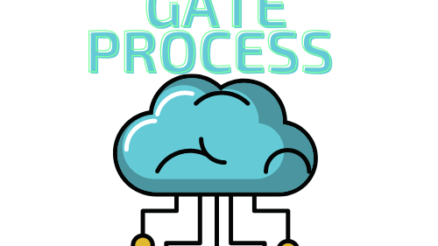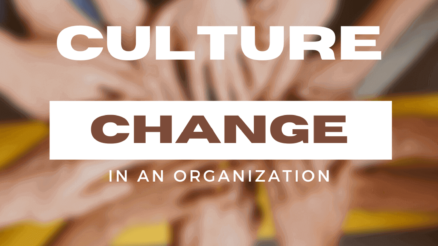Are you ready to unlock the magic that turns ordinary design into an unforgettable experience?
Storytelling in design thinking is the secret ingredient that adds depth, meaning, and purpose to every project.
It’s time to explore the power of narratives and their ability to elevate your designs from good to extraordinary.
So, buckle up and embark on a journey that will forever transform the way you approach design.
Are you ready to embrace the enchantment of storytelling in design thinking?
What is design thinking?
Design thinking is a human-centered problem-solving approach that seeks to understand and address complex challenges by employing empathy, creativity, and iterative prototyping.
It emphasizes a holistic understanding of users’ needs, encourages collaborative teamwork, and promotes a mindset of continuous learning and adaptation.
Design thinking places a strong emphasis on empathizing with users, defining the problem, generating innovative ideas, prototyping and testing solutions, and iterating based on feedback.
It is a versatile and flexible methodology that can be applied to various fields and industries, enabling designers and teams to develop innovative and user-centric solutions.
Key principles and stages of design thinking
Here are the key principles and stages of design thinking:
- Empathy: The foundation of design thinking is empathy. Designers strive to understand the needs, desires, and challenges of the users they are designing for. By putting themselves in the users’ shoes, designers gain deep insights into their experiences and develop a genuine understanding of their perspectives.
- Define: In the define stage, designers synthesize the insights gained through empathy to define the core problem or challenge they need to address. This involves reframing the problem, identifying the key issues, and establishing a clear problem statement that guides the design process.
- Ideate: In the ideation stage, designers generate a wide range of ideas and solutions. It is a divergent thinking phase where creativity flourishes, and no idea is considered too wild or impractical. The goal is to encourage the generation of innovative concepts that can potentially solve the defined problem.
- Prototype: Prototyping involves transforming selected ideas into tangible representations. Designers create low-fidelity prototypes, such as sketches, storyboards, or physical models, to bring their ideas to life. Prototypes allow designers to quickly test and iterate on their concepts, gaining valuable feedback and insights.
- Test: The test stage involves gathering feedback on the prototypes from users or stakeholders. Designers observe and interact with users to understand how well the prototypes meet their needs and expectations. This feedback informs further iterations and refinements in the design.
- Iterate: Design thinking is an iterative process, and iteration is at the core of its philosophy. Designers use the feedback collected during testing to refine and improve their designs. This iterative cycle continues until a viable and user-centric solution is achieved.
Importance of storytelling in design thinking
Storytelling plays a crucial role in design thinking, transforming it from a mere problem-solving process to a captivating and meaningful journey. And storytelling is an effective tool in managing change at organziations.
Here’s why storytelling is of utmost importance in design thinking:
Human Connection
Stories have the power to connect with people on an emotional level. By incorporating storytelling in design thinking, designers can create narratives that resonate with users, making them feel understood and valued. This emotional connection fosters empathy, allowing designers to gain deeper insights into users’ needs, desires, and aspirations.
Enhancing User Engagement
Stories have the ability to engage and captivate an audience. When design solutions are presented in the form of compelling narratives, users become active participants in the story, envisioning themselves as part of the design journey. This heightened engagement leads to a better understanding of how users interact with the design and elicits valuable feedback.
Communicating Complex Ideas
Design thinking often deals with complex problems that can be difficult to convey effectively. Through storytelling, designers can simplify and communicate complex ideas in a relatable and digestible manner. Stories help bridge the gap between designers and stakeholders by presenting information in a coherent and engaging way, making it easier for everyone involved to understand the vision and goals of the design.
Inspiring Creativity
Stories have the power to inspire and ignite creativity. By weaving narratives into the design thinking process, designers can tap into their imagination and push boundaries, resulting in innovative and out-of-the-box solutions. Stories provide a context and a sense of purpose, allowing designers to explore different perspectives, imagine possibilities, and think beyond conventional constraints.
Driving Collaboration
Storytelling encourages collaboration and teamwork within design thinking. When designers and stakeholders share stories, they create a common language and understanding, fostering a collaborative environment where diverse perspectives can be embraced. Stories serve as a catalyst for discussions, generating new ideas, and promoting a collective ownership of the design process.
Storytelling Techniques in Design Thinking
By incorporating storytelling techniques in empathy and user stories, designers can cultivate a deeper sense of understanding and empathy towards users. This, in turn, leads to more user-centric and impactful design solutions that truly resonate with the intended audience.
User stories
User stories are essential components of design thinking, and incorporating storytelling techniques can greatly enhance their effectiveness.
User stories are narratives that describe a specific user’s experience, needs, and goals in a concise and relatable manner.
They help designers develop a human-centered perspective and ensure that the design solutions are tailored to the users’ actual needs.
User stories typically follow a simple format, such as “As a [type of user], I want [a specific need or goal], so that [benefit or outcome].”
Narrative
Narrative contributes to defining the context, scope, and direction of the design challenge. Designers can create a compelling narrative that helps frame the problem effectively.
A narrative refers to the story or plot that ties together various elements of the design challenge. It creates a cohesive and engaging storyline that captures the essence of the problem, the motivations of the users, and the desired impact.
A well-crafted narrative helps communicate the problem effectively, inspire creative thinking, and align stakeholders around a shared vision.
Visual Storytelling
Visual storytelling involves using visual elements such as images, sketches, diagrams, or storyboards to convey a narrative.
Visuals have the power to communicate complex ideas and evoke emotions in a concise and impactful way. By creating visual narratives, designers can enhance understanding, engage stakeholders, and generate new insights.
Visual storytelling can be particularly useful during ideation, concept communication, and user testing phases, where it enables designers to showcase their ideas and designs in a visually compelling manner.
Journey Mapping
Journey mapping is a storytelling technique that focuses on mapping out the user’s experience over time.
It involves visually representing the user’s interactions, emotions, and touchpoints throughout their journey with a product, service, or experience.
Journey maps help designers understand the user’s perspective, uncover pain points, and identify opportunities for improvement.
By visualizing the user’s story and interactions, designers can gain empathy, identify key moments of engagement or frustration, and design solutions that address the user’s needs at each stage of their journey
Design thinking Storytelling Example – The Airbnb Story
In the early stages of Airbnb, the founders faced a challenge in gaining trust and adoption from users. To address this, they incorporated storytelling into their design thinking process to create a compelling narrative that resonated with potential users.
Empathy and User Stories
The founders empathized with users who were hesitant to stay in a stranger’s home and crafted user stories that highlighted the desires and concerns of both hosts and guests. These stories helped them understand the emotional needs and motivations of their target audience.
Problem Framing and Narrative
The founders realized that the problem was not just about finding a place to stay but also about creating a sense of belonging and connection with the local community. They framed the problem as enabling people to “belong anywhere” and created a narrative that emphasized the unique experiences and connections that users could have through Airbnb.
Ideation and Storytelling
The founders used storytelling techniques during ideation to generate and refine ideas. They created narratives around different user scenarios, imagining how people could share their homes and have meaningful experiences while traveling. These stories inspired creative thinking and helped in developing innovative solutions.
Prototyping and Storytelling
The founders built prototypes of the Airbnb website and mobile app, but they realized that visuals alone were not sufficient to convey the vision and value of the platform. They incorporated storytelling elements into their product demonstrations, showcasing the personal stories of hosts and guests, and highlighting the transformative experiences that Airbnb facilitated.
Iteration and Refinement
As Airbnb grew, the founders continued to iterate and refine their product based on user feedback. They collected and shared stories from users who had unforgettable experiences through Airbnb, incorporating these narratives into their design process. These stories guided the team in enhancing the user experience and addressing pain points.
Communication and Branding
Storytelling played a crucial role in Airbnb’s communication and branding efforts. They created compelling stories and visuals that communicated their mission, values, and the unique experiences that their platform offered. These narratives helped in building trust, engaging users, and differentiating Airbnb from traditional accommodation options.
The combination of design thinking and storytelling enabled Airbnb to create a powerful and relatable narrative that resonated with users. By understanding the emotional needs of their target audience, framing the problem in a compelling way, ideating through storytelling, prototyping with narrative elements, iterating based on user feedback, and communicating their brand story effectively, Airbnb successfully transformed the way people think about travel and accommodation.
Final words
Incorporating storytelling into the design thinking process can be a game-changer for creating impactful and user-centered solutions. By leveraging the power of narratives, empathy, and user stories, designers can gain a deeper understanding of users’ needs, foster collaboration, and communicate their design ideas effectively.
Storytelling techniques allow designers to go beyond data and numbers, connecting with users on an emotional level. It helps to humanize the design process and ensures that the solutions created are not just functional but also meaningful and engaging.
So, as you embark on your design journey, remember the power of storytelling. Embrace the narratives that emerge from user experiences, craft compelling user stories, and leverage storytelling techniques to communicate and iterate on your designs. By doing so, you’ll be able to create solutions that truly resonate with users, drive positive impact, and deliver memorable experiences. Happy storytelling and design thinking



